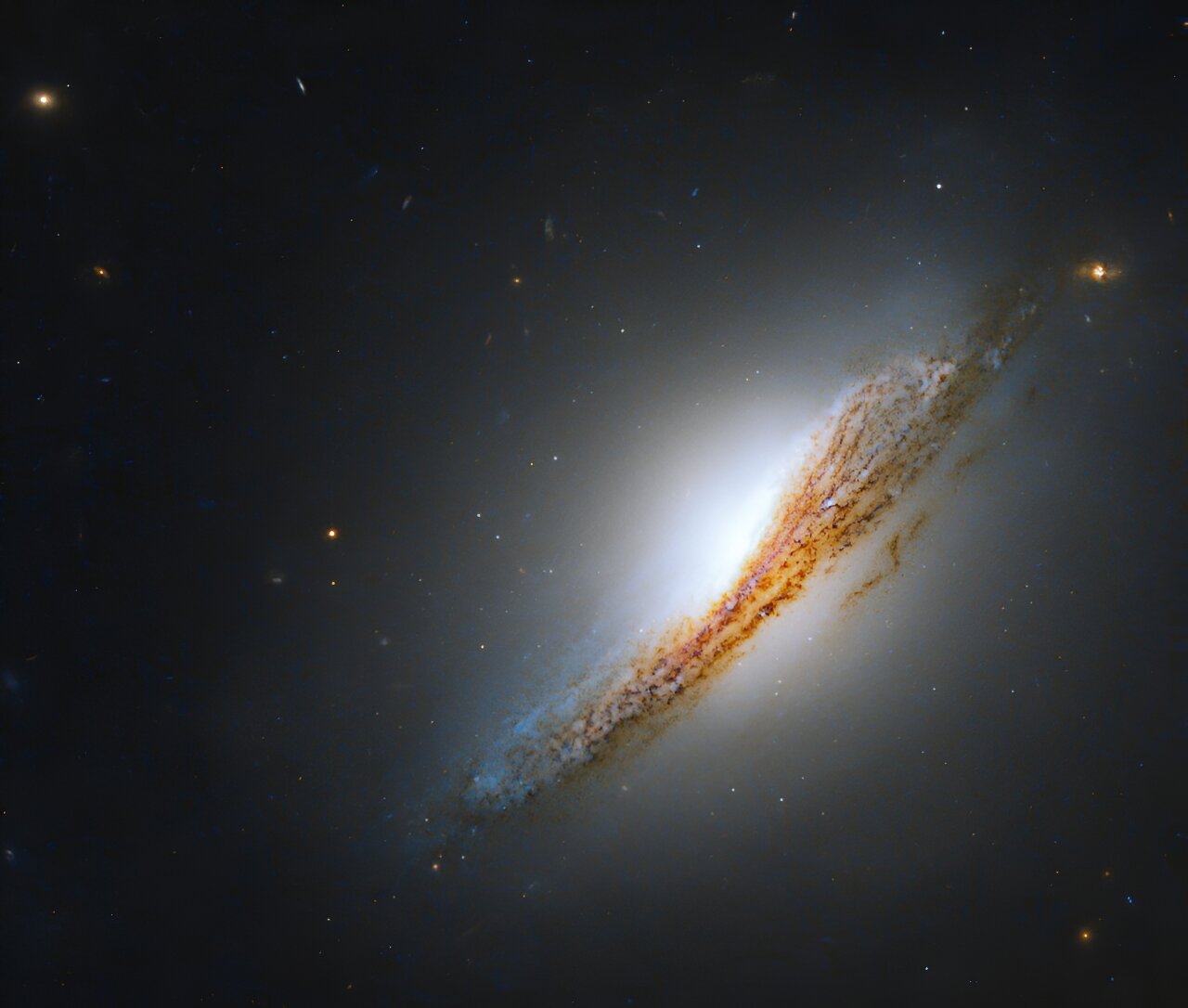The Hubble Space Observatory received an image of the rare galaxy NGC 612. It belongs to the lenticular type and has a number of interesting features. The main one is the activity in the radio range.

Rare galaxy NGC 612
Scientists working with the Hubble Space Observatory have received a remarkable photo of the galaxy NGC 612. It shows a bright orange belt surrounding the inner areas, which have a blue color.
This galaxy is located in the Sculptor constellation at a distance of 400 million light-years, and it can be easily observed in the Southern Hemisphere of the Earth, but in the northern, it is impossible. We see NGC 612 from the edge and therefore the external gas and dust flows are in the foreground.
NGC 612 belongs to the lenticular group of galaxies. Like spiral ones, they are a disk with a thickening in the center. However, unlike star systems similar to the Milky Way, they do not have spiral arms.
In addition, lenticular galaxies usually have an older stellar population than spiral galaxies, and the process of star formation in them is already beginning to slow down. However, the stars in NGC 612 are relatively young. Their age ranges from 40 to 100 million years.
What is interesting about NGC 612
NGC 612 belongs to active galaxies. This means that its central regions emit about 100 times more energy than all the stars in the disk. More precisely, it belongs to Type II Seyfert galaxies — one of the most common varieties of such systems. The matter around its core moves relatively calmly.
The most interesting thing about NGC 612 is that its core is active in the radio range. Such systems are called radio galaxies and most of them belong to the elliptical type. Scientists know of only five galaxies that behave like this one.
There are two reasons why NGC 612 emits such powerful radio signals. The first is its interaction with the neighboring spiral galaxy. The second is that something interesting is happening in its central part.
According to phys.org
Follow us on Twitter to get the most interesting space news in time
https://twitter.com/ust_magazine

